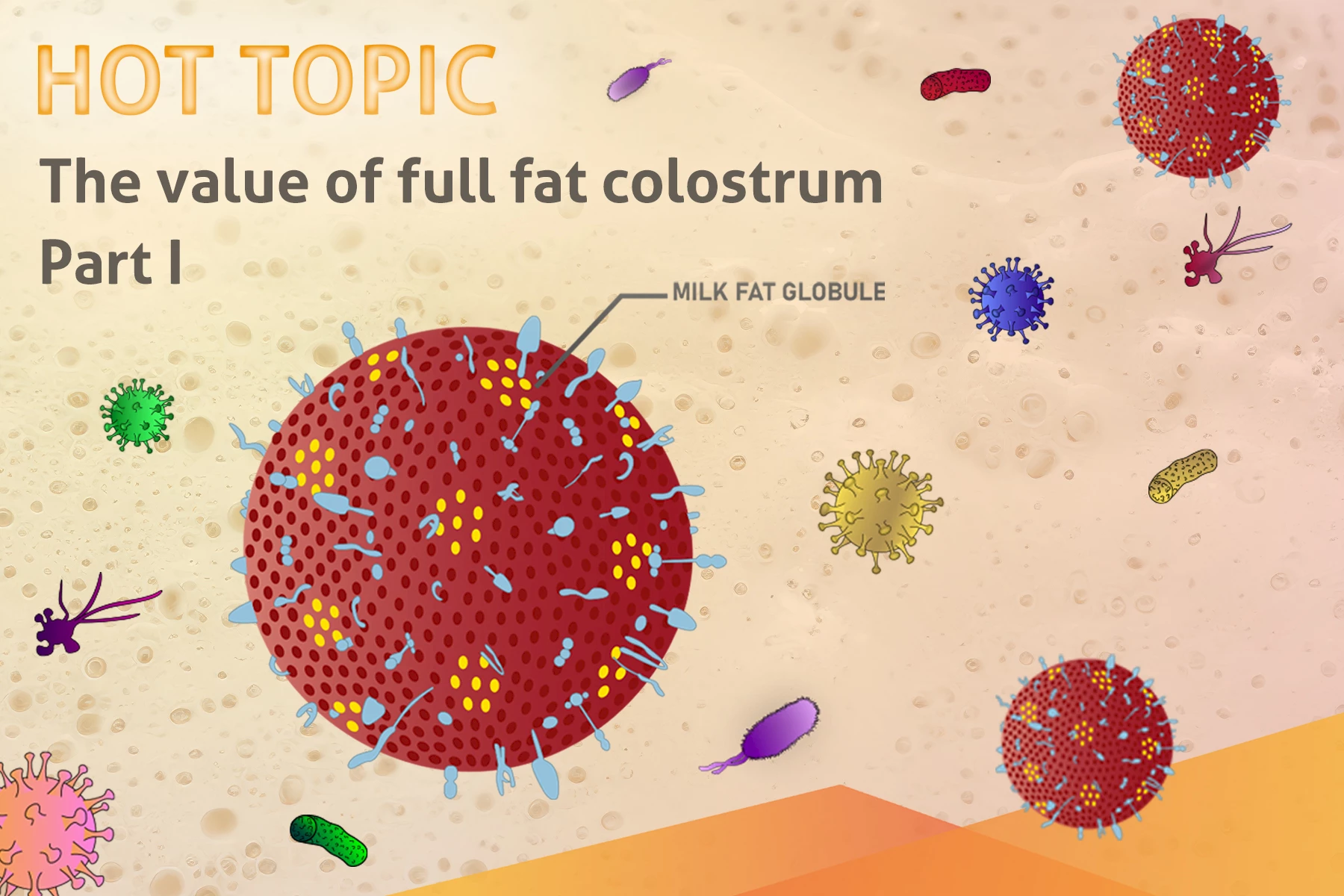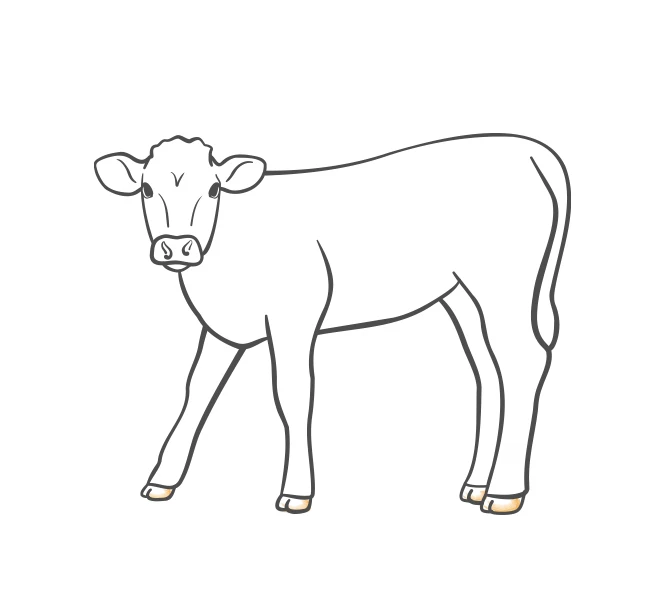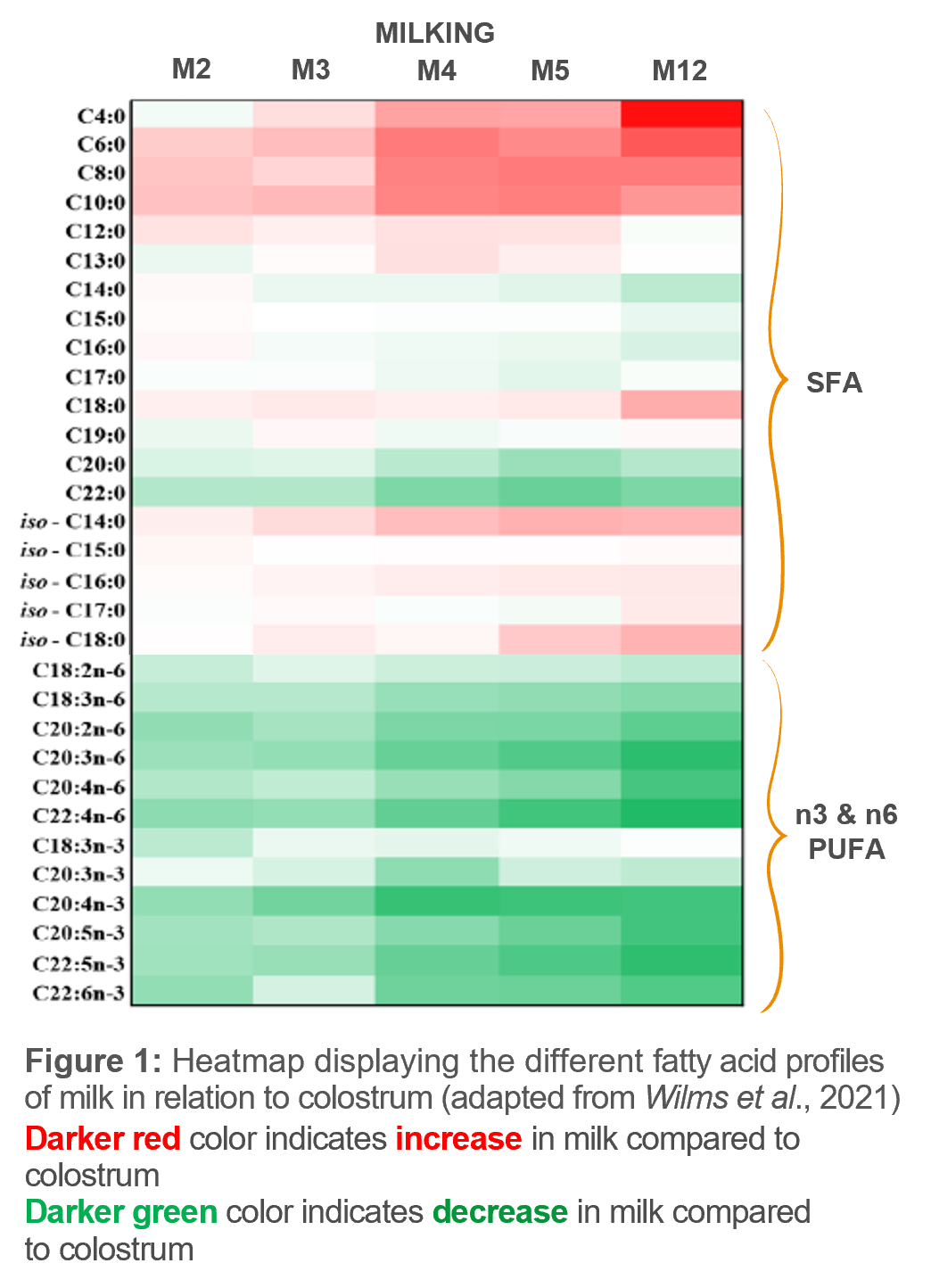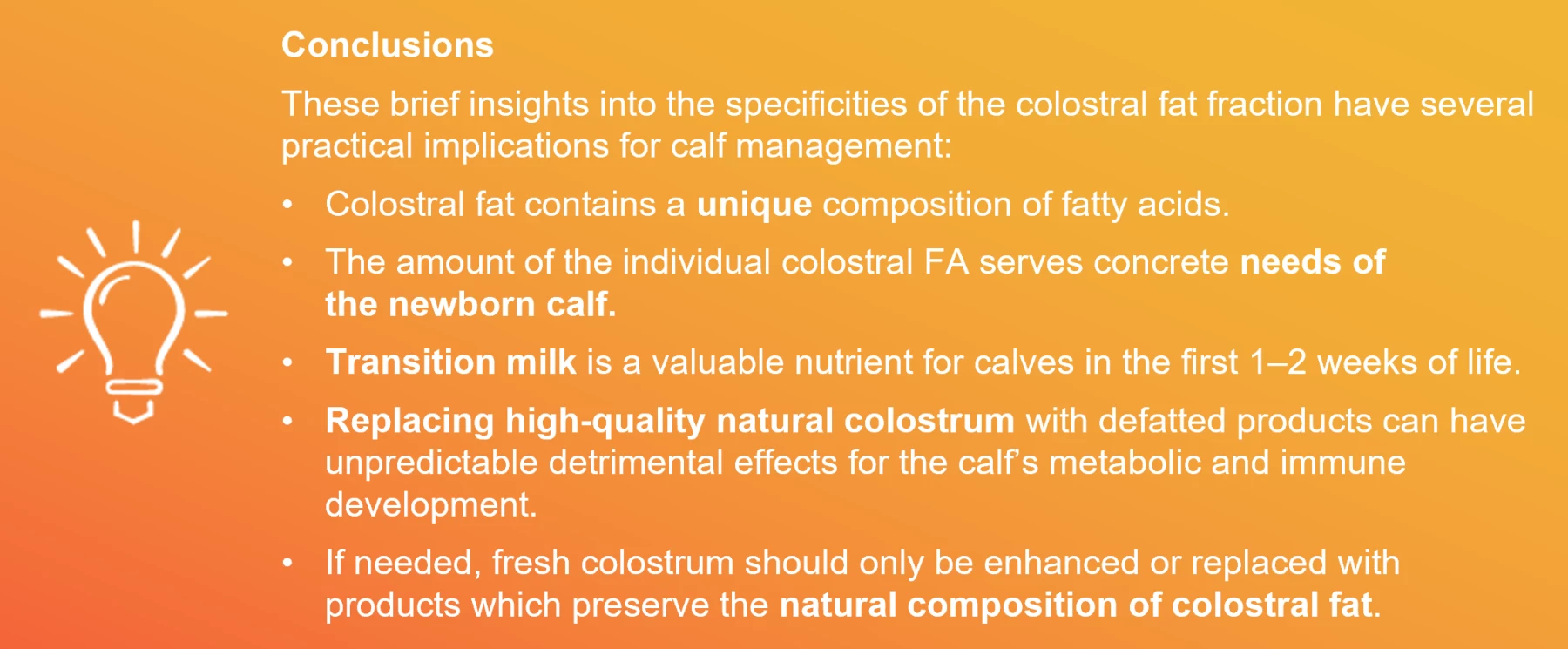

The value of full fat colostrum Part I – Colostral fat is not „just“ fat
In both human and veterinary medicine, it has become clear that body fat serves many important functions. Apart from representing a mere energy storage, fat is now viewed as a complex organ with various metabolic and endocrine functions. This has stimulated interest in the role of fat as a macronutrient. When focusing on calves, the different types of fat cells and different compositions of “fat” itself are closely related to the fat fraction of bovine colostrum and milk.
Whereas the protein fraction of colostrum, transition milk and their immune contributions have been well studied, the knowledge about the function of colostral fat is still limited. This lack of understanding is especially relevant as commercial colostrum and milk replacer products are often defatted or contain fat from botanical origin, whose fatty acid (FA) profiles differ significantly from milk and colostrum. Which consequences might this have? What is the function of colostral fat for the newborn calf? And does it differ from milk fat? Let’s find out.
The milk fat fraction
Milk fat is the most complex natural fat, containing ~400 different fatty acids. Its natural function for the offspring is the provision of ~50 % of the total dietary energy and of essential fatty acids. The fatty acid profile of milk is influenced by dietary fatty acids, ruminal biohydrogenation, and mammary lipogenesis. Therefore, factors like breed, stage of lactation and different feeding practices play important roles in the composition of the milk fat fraction. Additionally, parity affects the milk fat composition, due to the differences in energy partitioning of primiparous and multiparous cows. The fat fraction of colostrum also differs between primiparous and multiparous cows, which might be explained by differences in dry matter intake. Prepartum metabolizable energy uptake can alter the colostral fatty acid profile. Further specificities of colostral fat will be discussed below.

Differences in the fatty acid profile of colostrum and milk
Colostrum generally has a higher fat content (6–7 %) than transition and mature milk (3–4 %). Regarding the fatty acid profile of the fat fraction, some differences between milk and colostrum will be named here (see Figure 1). Their effect for the neonatal calf will be discussed in the following section.
Colostrum has a lower content of short-chain fatty acids (SCFA, fatty acids with less than 6 carbon atoms), especially butyric acid (C4:0) and caproic acid (C6:0). The total proportion of saturated fatty acids (SFA) is not different between colostrum and milk; however, the content of some SFA such as myristic (C14:0) are palmitic acid (C16:0) is higher in colostrum. While the amount of mono-unsaturated fatty acids (MUFA) in colostrum does not differ from milk, colostrum contains 40 % higher pro-portion of poly-unsaturated fatty acids (PUFA), especially n3 and n6 FA.

Not just an energy source – The multiple functions of colostral fat in the neonate
Full-fat colostrum – more than an energy drink
Colostrum is the first meal of newborn mammals. In calves, the fat fraction of colostrum is essential for thermoregulation in the first days of life. A lack of colostral fat leads to energy deficiency, hypothermia, and reduced livability. The previous section elucidated some differences in the fatty acid profile of colostrum and milk. Apart from the indisputable necessity of colostral fat for the thermoregulation of neonates, it is postulated that the specific FA profile of colostrum meets concrete physiological needs of new-born calves.
The high proportion of n-3 and n-6 PUFA modulates inflammation in the first days of life by serving as a substrate for the formation of so-called eicosanoids, inflammatory molecules. This helps the calf’s organism with the physiological adaption from the in utero to the ex utero environment. Furthermore, PUFA shape the long-term development of the immune and nervous systems through their involvement in specific cellular processes that steer cell maturation and organogenesis. Older animals are able to synthetize certain PUFA through elongation of dietary precursor FA. However, as this capacity evolves over the first few weeks of life, the larger content of PUFA in colostrum and transition milk benefits young calves.
Regarding SFA, there are marked differences between individual FA as to their increase or decrease in milk compared to colostrum. The saturated SCFA butyric and caproic acid are contained to a much lower proportion in colostrum than in milk. These FA have essential regulatory functions in cell metabolism and thereby stimulate epithelial differentiation. This may also reduce paracellular permeability in the gut. Though these are vital functions for the gut tissue, the reduced content of butyric and caproic acid in colostrum could help to prolong the period of intestinal permeability in the newborn. This helps the uptake of large molecules such as immunoglobulins from the gut and benefits the calf in the first days of life. Other SFA such as myristic acid (C14:0) or palmitic acid (C16:0) promote appetite of the calf and thereby colostrum and milk intake. Furthermore, palmitic acid influences the configuration of the gut microbiome.

Read our latest HOT TOPIC: "The value of full fat colostrum Part I – Colostral fat is not „just“ fat" written by Phytobiotics' expert Dr. Oguz Calisici.
Download the HOT TOPIC (PDF) >>
Contact our experts or send us a message. We will contact you as soon as possible.